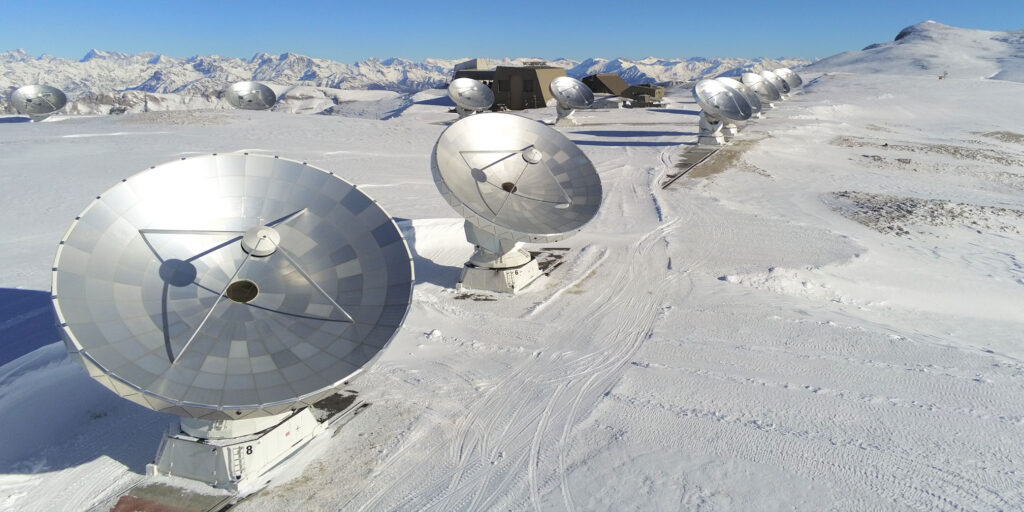
The NOEMA array with its twelve antennas
The NOEMA interferometer is currently the most advanced millimeter array in the Northern Hemisphere. Situated on the Plateau de Bure at 2550m altitude in the French Alps, the geographical position of its phase center is
Longitude: 05:54:28.5 East, Latitude: 44:38:02.0 North
During its history, the observatory at the Plateau de Bure underwent several track extensions, received additional antennas (all of 15m diameter and similar construction as the first ones) and technical upgrades. From a three antenna interferometer with a maximum baseline of 288 meters in 1988, it has evolved to a twelve-antenna array with baselines up to 1.7 kilometers. A new generation of powerful dual-polarisation receivers for the 3mm and 1mm observing bands was installed in 2006, and extended to the 2mm observing band in late 2007, and to the 0.8mm band at the end of 2010. With the inauguration of the seventh antenna in September 2014, the observatory has started its now completed transformation into NOEMA (NOrthern Extended Millimeter Array).
The antennas of the NOEMA interferometer can move on rail tracks up to a maximum separation of currently 1.7 km in the E-W direction and 368 m in the N-S direction, corresponding to a resolution of 0.2 arcsecs at an observing wavelength of 1.3 mm (230 GHz).
Since 1990, the interferometer is open to the world-wide scientific community, and issues twice a year a call for observing proposals. Because of its complexity and to make it attractive to the wide community, observations at the interferometer are not performed by the astronomers who propose them, but by the telescope operators and IRAM staff astronomers, who also provide assistance at various stages of the data reduction and analysis. In this way, millimeter interferometry can be applied as a powerful tool also by non-specialists from other fields of astronomy, such as optical, infrared, or X-ray astronomers.

